How to display the image from the phone to the TV?
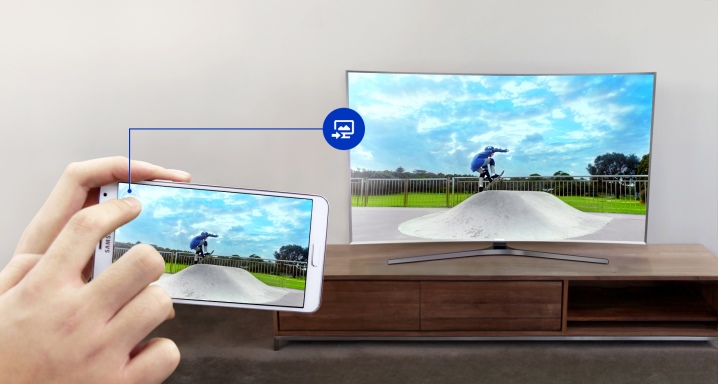
Today it is not difficult to display an image from a phone on a TV screen. Such a useful feature is indispensable when viewing a home album of photos or videos. For a picture to appear on the screen, you only need to link two devices together. There are several methods for doing this. Each user chooses a convenient option for himself.
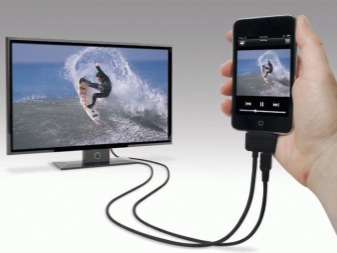

When is it needed?
It is convenient to watch photos, videos and any other content through the TV. The screen makes it possible to get a large picture, to see what is happening in detail. The image from the smartphone to the TV is transmitted without interference and delays, but only if the connection is correct. And if you supplement the TV screen with a wireless mouse and keyboard, then this can successfully replace your computer.
This method is used for various purposes. Some people prefer to communicate on social networks and display video calls on the screen. Others take the opportunity to play their favorite game, watch streaming, or even read a large book. It is very convenient to work with documentation in this mode as well.
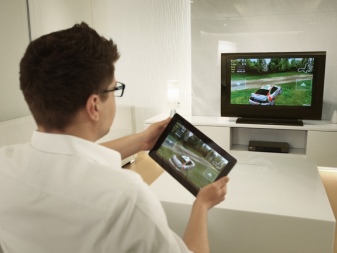
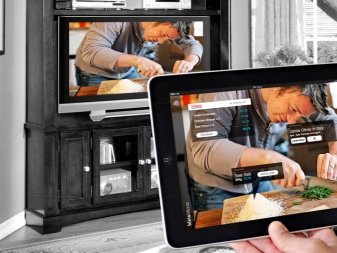
The specificity of the connection depends on the type of devices used. There are phones that do not have an HDMI port. It is better to use it wirelessly here. In general, there are only two types of connection between the phone and the TV: wired or wireless.
Regardless of the connection option, a minimum of effort is required to display the picture on the screen.
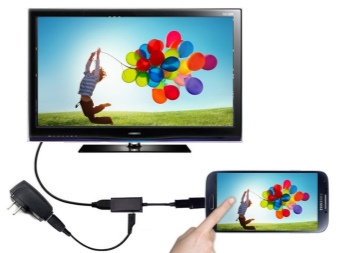
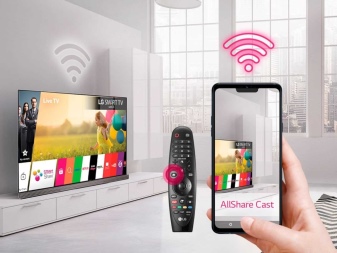
Wired connection methods
It's easy to guess which connection is called wired, and how it differs from wireless. With it, it is very easy to transfer an image from your phone to the screen of a large TV in a matter of minutes.

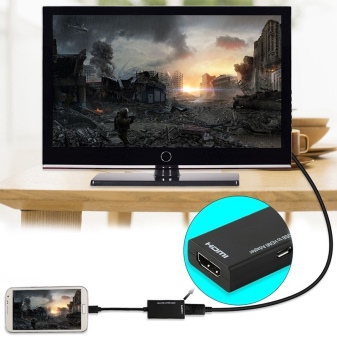
Via HDMI
To project a picture in this way, you need to use HDMI. Today this type of connection is considered the most popular, since this port is present on the case of most models. The phone must have micro-HDMI to view photos or videos. If not, this is not a problem. Modern manufacturers have come up with a special adapter that allows you to display the picture in the same quality as if the smartphone were connected directly.
In any electronics store, a specialist will definitely select the necessary product. Visually, this adapter is similar to a USB port. On one end of the cord is HDMI Type, on the other - micro-HDMI Type D. To pass the image through the cable, you will need to disconnect the devices. After the phone and TV communicate with each other, you can turn them on. At the second stage, you will need to go to the TV menu and manually set the signal source there. Without this action, viewing the image will be impossible. The signal source is the above HDMI.
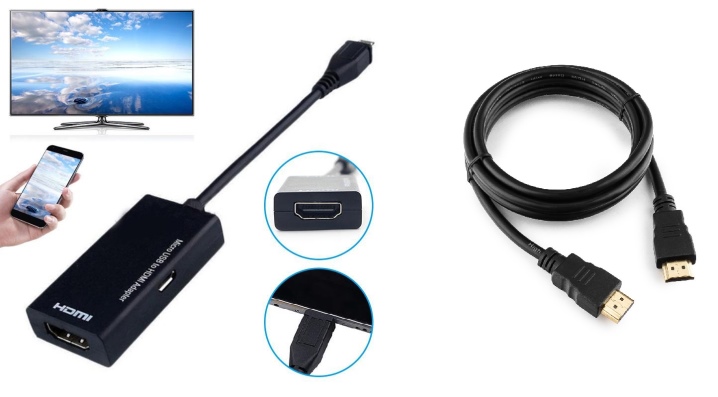
On expensive models of modern technology, there may be several such ports. From the menu, you just need to select the one you need. When the second stage is completed, you need to select the desired function in the smartphone. This will duplicate the image onto the TV screen. In the process of such a connection, no problems should arise.
It is important to remember that not every application has an automatic dubbing function for two screens, so the setting is done manually. There is always an item in the phone menu that is responsible specifically for the HDMI format. Unless it's a very old model. The frequency of automatic updates is also configured immediately.This is very convenient if you don't want to waste time on configuring components.
Even if a micro-USB-HDMI adapter is used during the connection, the process remains the same.
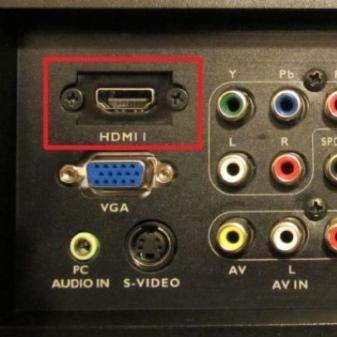
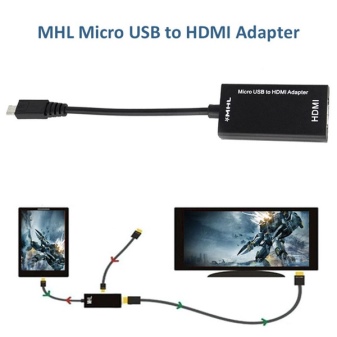
Via USB cable
If you use this particular method, then it becomes possible to get additional access to the memory and files stored on the phone. Through the specified cable, you can transfer videos, photos and even documents. It takes very little time to play files in a valid format. You can purchase the cable at an electrical store. One end connects via micro-USB to a smartphone, the other to a TV via a standard USB port.
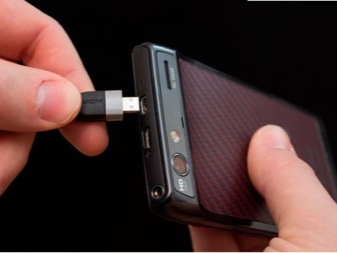
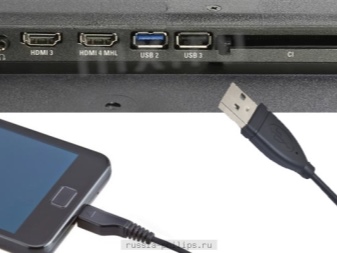
The user may face a situation when the phone asks for the type of connection. It is not difficult to make a choice, you will need to select an item with the appropriate name. To see the necessary content, on the TV, you also need to make the minimum settings. Reading mode should be marked "media files".
The described step of connecting the smartphone will differ depending on the TV model. Some manufacturers provide a multimedia function on their equipment, on other TVs you will need to enter the Home or Source menu item. The file to be opened will be displayed on the TV screen. You will definitely need to change the signal source. The phone connected to the TV is charging.

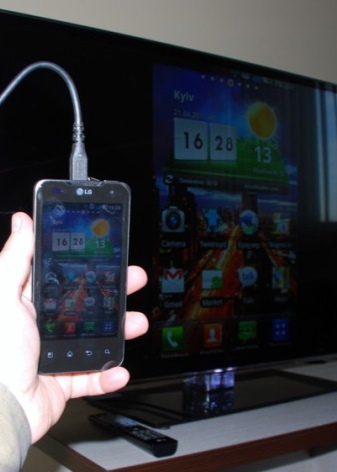
Wireless transmission options
There are several wireless options for connecting a smartphone to a TV. You can distribute via Wi-Fi or duplicate the image by another method. This may require the installation of additional software. It won't be difficult to find it if you have a Google account.
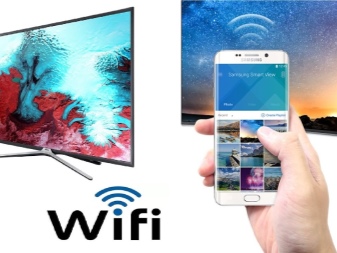
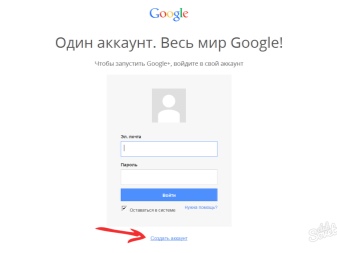
Wi-Fi
For Android, connecting to a TV wirelessly is always done through a special application. So, you can play not only a photo, but also a video, and the signal will arrive without interference. Playmarket has a Screen Cast application, through which it is easy to transfer a picture to the TV screen. Users have identified several main advantages of this software:
- simple menu;
- easy and quick installation;
- extensive functionality.
The main task of this program is to duplicate information displayed on the phone screen. To send a file, you need to meet the only condition - to connect to the network. The devices work through a router. In some cases, you need to create a new access point. You can switch the image to the big screen by clicking on the "Start" button, which is displayed after starting the software.
Start Now will be displayed in front of the user.

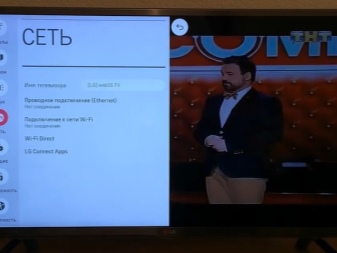
To prevent the application from asking for permission every time, you can set it to automatic mode. To do this, you must put a tick in front of the inscription Don`t Show Again, which means "Do not ask again". Then the browser will provide a link where you need to register the port address and the specified code. For convenience, you can use the onscreen keyboard. After that, information from the smartphone is displayed on the TV screen.
There should be no problems using the application. The developer has provided the ability to reconfigure the parameters, including security. If you wish, you can put a password on the broadcast.

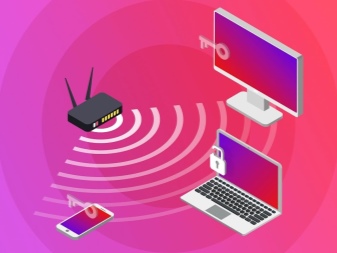
Using the wireless screen function on Smart TV
You can also transfer the image to the big screen through programs such as Intel WiDi and AirPlay. Any user will tell that in some cases it is not always convenient to use a cable. Software for wireless content transfer solves many problems. It is applicable not only to phones, but also to computers and even tablets. Intel WiDi technology from the world famous company of the same name is based on the use of Wi-Fi.
But to connect devices, it is imperative that each of them support the technology used.Among the advantages, one can single out the absence of the need to use additional equipment in the form of a router, access point or router. You can find out if the TV supports WiDi from the list of technical capabilities specified by the manufacturer in the passport.
In principle, the activation of the technology on all TVs is the same. The user will need to open the menu first. It is located on the remote control, it can be designated as Smart or Home. Here you need to find and open Screen Share. This is how WiDi is activated.
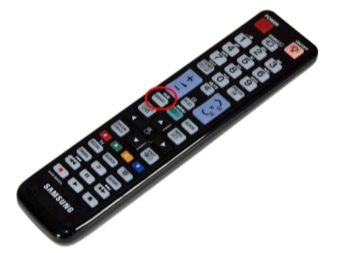
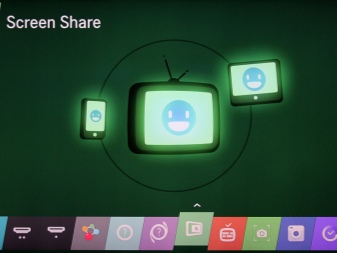
You will need to download the corresponding application on your phone first. After starting it, scanning of the wireless display occurs automatically. As soon as the TV is found, the user will be prompted to connect to it. Several numbers will now appear on the big screen. They must be entered on the phone. As soon as the connection is made, the information on the smartphone screen will be displayed on the TV.
You can also use a tablet or laptop.
WiDi technology reduces the amount of wires in your home. Often, the technique is used as a monitor to a computer. It becomes more interesting to play, the picture will be bigger, and the impressions will be brighter. But with the technology in question, not everything is as smooth as it might seem at first glance. Since the manufacturer took care of equipping only his product, it is not possible to use wireless communication on every device.
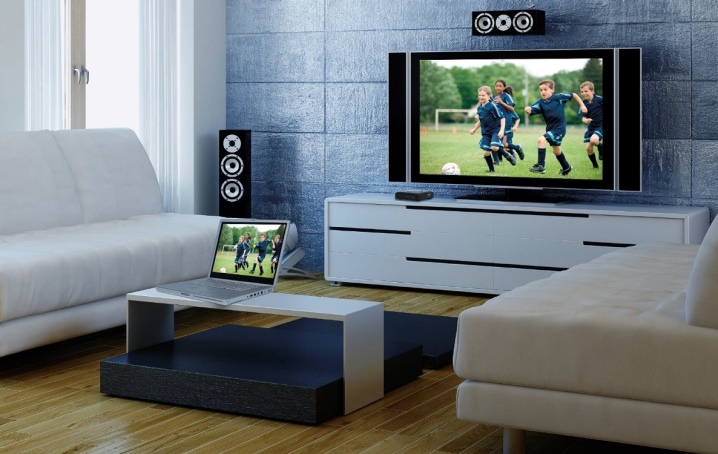
You won't be able to use WiDi even if you want to display a game with high technical requirements on the TV screen. This is because the processor graphics are scarce. If you look closely, it is difficult not to notice the delay when the picture is fed to the TV. In the case of video and photo, a delay of a few seconds is almost invisible, but it becomes uncomfortable during the game. Where instant response is required from the user, there will be none.
From the list of significant advantages that the technology can boast, we can single out:
- lack of wires;
- the ability to play files with FullHD resolution;
- the possibility of expanding the screen.
The disadvantages are the delay described above and the ability to use the technology only on Intel devices.

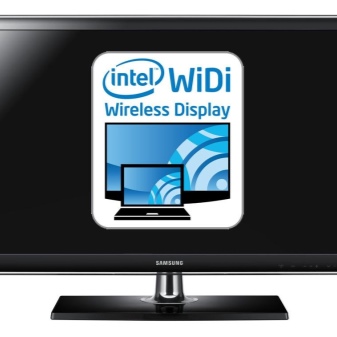
When using the AirPlay app, you first need to connect all devices to a Wi-Fi network. After that, a video or photo is found on the smartphone, which is planned to be duplicated on the big screen. Clicking on the icon selects the indicated TV. The file starts streaming.
Not all devices natively support this app, but you can check it out on the App Store. It also happens that the broadcast starts automatically. This happens when both devices are compatible with AirPlay and no additional action is required from the user.
If there is a TV-shaped icon at the top of a running program, then the device is already activated.
When you need to change it, clicking on the indicated icon will display a complete list of devices available for use.
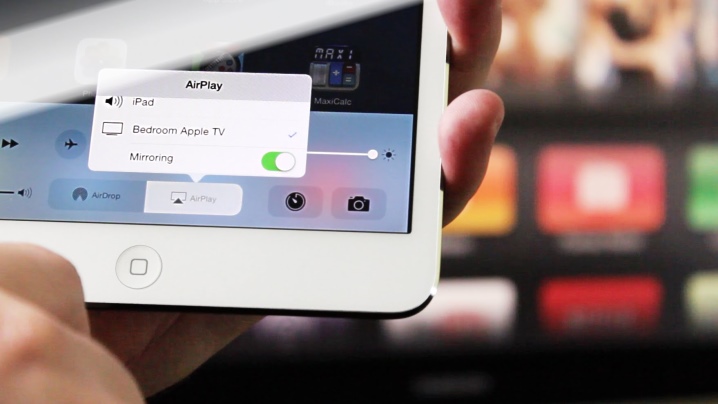
Through the Miracast program
Miracast is one of the technologies most demanded by users. This is a completely new standard for wireless connection, which is based on the use of another technology - Wi-Fi Direct. The developers were faced with the task of simplifying the already existing capabilities of displaying pictures from the phone on the TV screen. We managed to make innovative developments, and then put them into practice.
Owners of smartphones, whose equipment supports this technology, can transfer the picture to the big screen without any problems. To activate, you only need to press the touch screen a couple of times. Synchronization of the devices used is fast and without numerous settings.
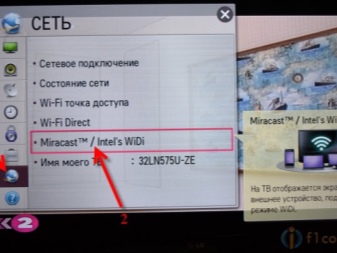

In order not to waste time, the user is first advised to make sure that the technician supports wireless data transmission to the TV display.Not all Android models support this feature. If this is a mid-range phone or a cheap device, then it is unlikely that it will be able to connect via Miracast.
On the smartphone, you will need to go to the settings, there is an item "Broadcast" or "Wireless display"... It all depends on the model of the equipment used. The specified item is activated manually, and if it is not there, then the phone model is not suitable for this type of connection. More information about the availability of such a function can be found in the quick settings menu, which is located in the section responsible for operating system notifications. Usually the feature is not available on those phones where there is no way to connect via Wi-Fi.
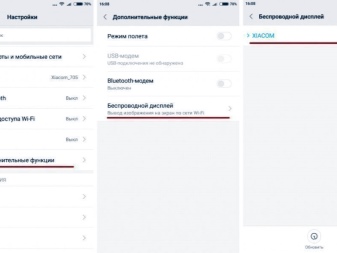
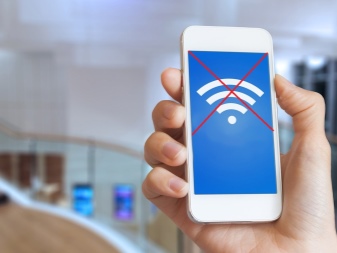
To activate wireless communication on a Samsung TV, you need to find the item on the remote control that is responsible for setting the type of signal source. There the user is interested in Screen Mirroring. In some models from this manufacturer, additional options are provided through which it becomes possible to activate screen mirroring.
On LG TVs, Miracast is activated through the settings and the "Network" item. If Sony equipment is used, the source is selected via the remote control. Scroll down to the item "Duplication". The wireless network is activated on the TV, and the phone must be active. Everything looks much simpler with Philips models.
In the settings, set the network parameters, then activate Wi-Fi.
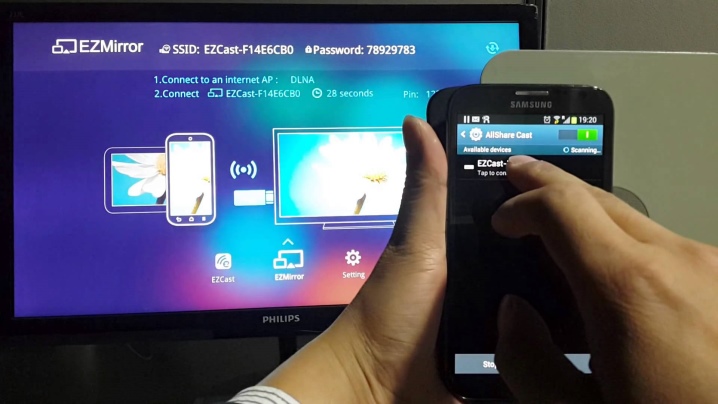
It is worth remembering that manufacturers, when releasing new models on the market, often make changes to these points. But in general, the connection procedure remains the same. The technology of transferring pictures to the TV screen has its own characteristics. First of all, they include Wi-Fi. After that, you can transfer the data in one of two available ways.
There is a "Screen" item in the gadget settings. By clicking on it, the user can see a list of devices ready to connect. After clicking on the phone screen, the connection starts. You will need to wait a bit. It also happens that the TV asks for permission to connect. You just need to check the corresponding box.
Another method involves using a quick action checklist. In it, they find a subsection with notifications from the operating system, then select the "Broadcast" item. When the source of the connection is found, you can start using it. These actions are enough to display the picture from the phone.
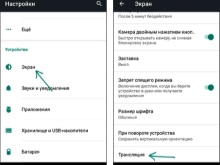
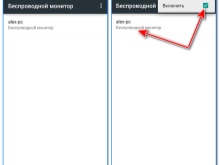
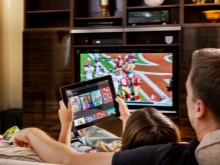
DLNA
This technology is used not only for combining a telephone and a TV. It is successfully used when it is necessary to link two computers, smartphones or laptops together. One of the main advantages is the absence of unnecessary wires, which only take up space and spoil the appearance of the room. It became possible to unite any devices by creating a single local network.
The necessary content is transferred quickly, the picture is clear. Users love the technology for its complete automation. The settings are set independently, which is why a person does not need special knowledge in the field of software. When compared with the previously described Miracast, there is a significant difference - the limited perception. What is meant by this?
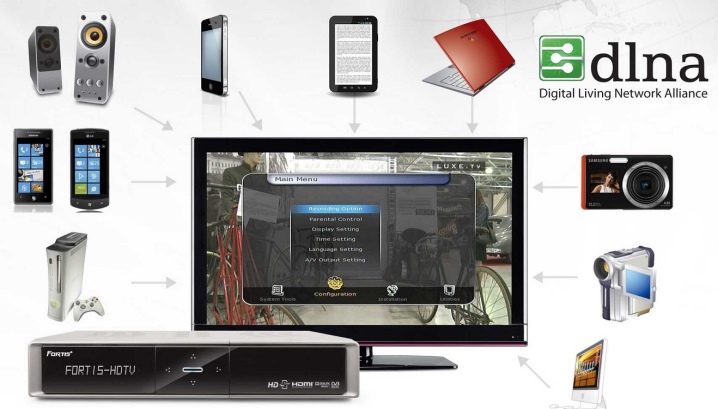
If the screen is completely duplicated with Miracast, then only the file marked by the user is recreated with DLNA. To connect your phone to your TV, you must first make sure both devices are using the same Wi-Fi network. At the second stage, you will need to launch DLNA software - it will scan the used gadgets. Choose a TV from the drop-down list and open the video on the phone.
The picture is transferred immediately.
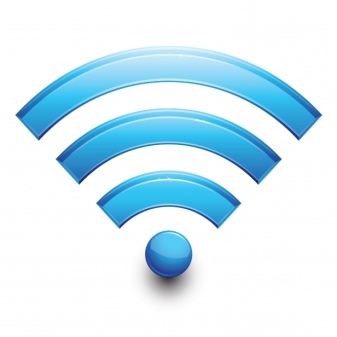
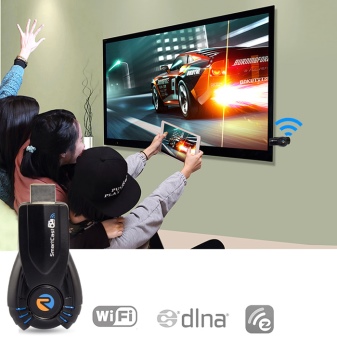
Most modern users prefer to use the wireless option. It has many advantages that are difficult to refuse if you value the free space in the apartment. Today micro-HDMI, MHL are considered outdated specifications, their developers do not duplicate them on new smartphones. In the absence of the corresponding module from the TV, you can buy an adapter and a signal converter.
There are many ways to qualitatively transfer an image to a large screen, everyone chooses what he likes. However, you always need to proceed from the capabilities that the gadget you use has.
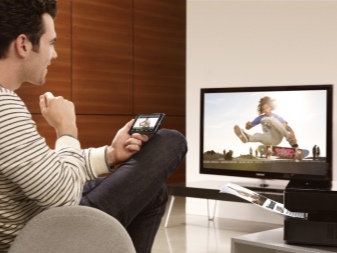
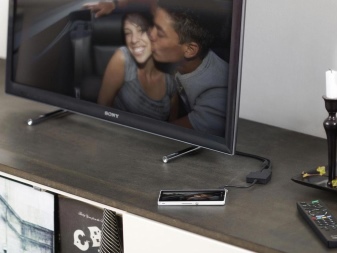
For information on how to transfer an image from a phone to a TV, see the following video.













The comment was sent successfully.